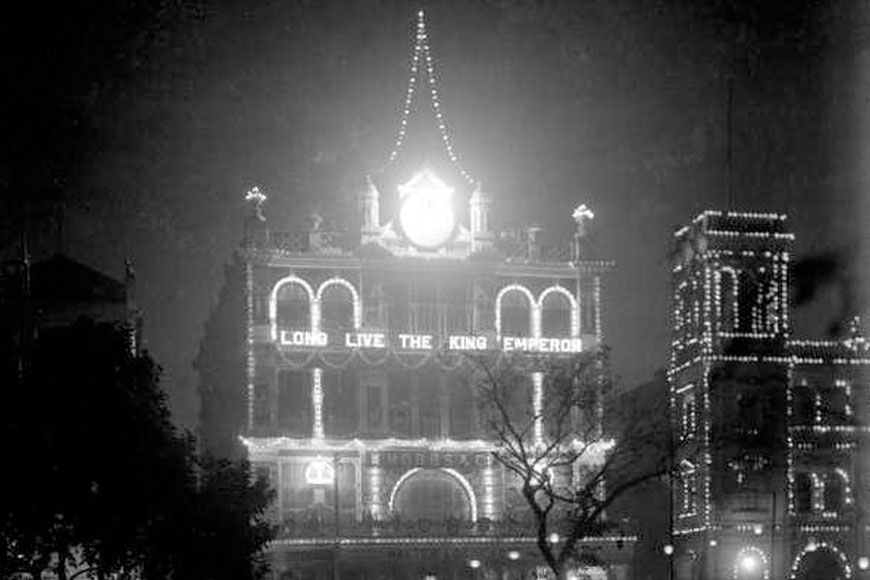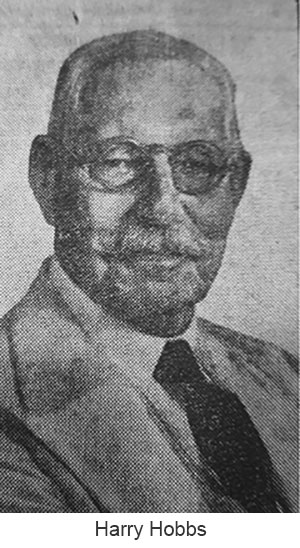Harry Hobbs, the English chronicler who fell in love with Calcutta

In 2012, an unlabelled size-nine shoebox was discovered in the archives of the Royal Commission on the Ancient and Historic Monuments of Scotland (RCAHMS) that yielded a treasury of glass plate photographs of India, dating more than a century ago. The rare and fragile glass plate negatives, which date back to around 1912, show life on the subcontinent at the high point of the British Raj and the detailed life in Kolkata, which was a major commercial hub back then. One glass plate shows lights picking out of the premises of H. Hobbs & Co at 4 Esplanade East, Kolkata, lit for the British royal visit.
 Harry Hobbs may be an unfamiliar Englishman for a majority of present-day Calcuttans, but he is a much-loved and revered gentleman for scholars and researchers working on Kolkata’s history. He was a prolific writer and frequently contributed articles to newspaper. He also wrote a dozen or so chronicles in first person on Calcutta’s life. His lucid style captured the rapidly changing society of British Calcutta and imperial India in general. The books are a goldmine of information about the burgeoning city and its people.
Harry Hobbs may be an unfamiliar Englishman for a majority of present-day Calcuttans, but he is a much-loved and revered gentleman for scholars and researchers working on Kolkata’s history. He was a prolific writer and frequently contributed articles to newspaper. He also wrote a dozen or so chronicles in first person on Calcutta’s life. His lucid style captured the rapidly changing society of British Calcutta and imperial India in general. The books are a goldmine of information about the burgeoning city and its people.
Born in Islington, Middlesex, England in 1865 to Henry Hobbs and Emily Holmes, Henry "Hy" "Harry" Hobbs was musically inclined from childhood and during his teens, he joined a piano factory in London as a technical apprentice. However, he was a restless spirit and the long, monotonous hours at his workplace left him totally disillusioned. He loved travelling and yearned for adventures. He finally decided to pack his bags and set off for the ‘exotic land’ that was India. At the age of 19, young Harry arrived in India in 1883 to start afresh and began working as a piano tuner. During that time, many Europeans had settled in and around Calcutta and many of them brought their pianos with them. Harry had no dearth of work in the hip and happening city.
Hobbs flourished as a successful businessman who also took up the prestigious position of ‘Special Director’ Manager of Asia’s first hotel, Spence's Hotel (now extinct). He was the Municipal Commissioner of the Calcutta Municipal Corporation in the 1930s and 40s.
After arriving in Calcutta, Harry, who was an enthusiastic globetrotter, travelled extensively to different parts of the country. He took up a job for Samuel Harraden’s Harold & Company that made musical instruments. Between 1884 and 1887, he was posted in Burma. By 1893, he gained fame and his expertise was much sought-after by his clients. Harry decided to set up his own business in Calcutta and launched ‘H Hobbs and Co Ltd’ which he operated from 4 Esplanade Row East, Calcutta. He advertised his shop as 'Pianoforte importers, repairers and tuners,’ and ‘Agents for Ky-Ko non-electric fans'. Harry himself was a talented piano player and had a huge library of perforated music rolls.
Hobbs lived above the branch on 4 Esplanade Row East until his death in 1956. The shop itself moved to 9 Esplanade Row East and then to 21, and thereafter to 9, Old Courthouse Street for a period before and then again during and after World War II.
Hobbs flourished as a successful businessman who also took up the prestigious position of ‘Special Director’ Manager of Asia’s first hotel, Spence's Hotel (now extinct). He was the Municipal Commissioner of the Calcutta Municipal Corporation in the 1930s and 40s. He was never a part of the British Civil or Military Services in India but he was very much a part of the ‘Reserve Volunteers’ in India and an active member of the Calcutta’s Port Defence Corps. He was also a member of the Royal Asiatic Society of Bengal and was considered an authority on old Calcutta, old theatres in India, on hotels and taverns, on English music, and Anglo-Indian social life. He lived in Calcutta for 73 years and then breathed his last on May 15, 1956, at the ripe old age of 92.
Hobbs is buried in the Bhawanipore Cemetery and his dilapidated tombstone bears the inscription: ‘His pen was his sword’. His obituary claimed that he was the oldest European in India.
Image Courtesy : https://www.livehistoryindia.com










